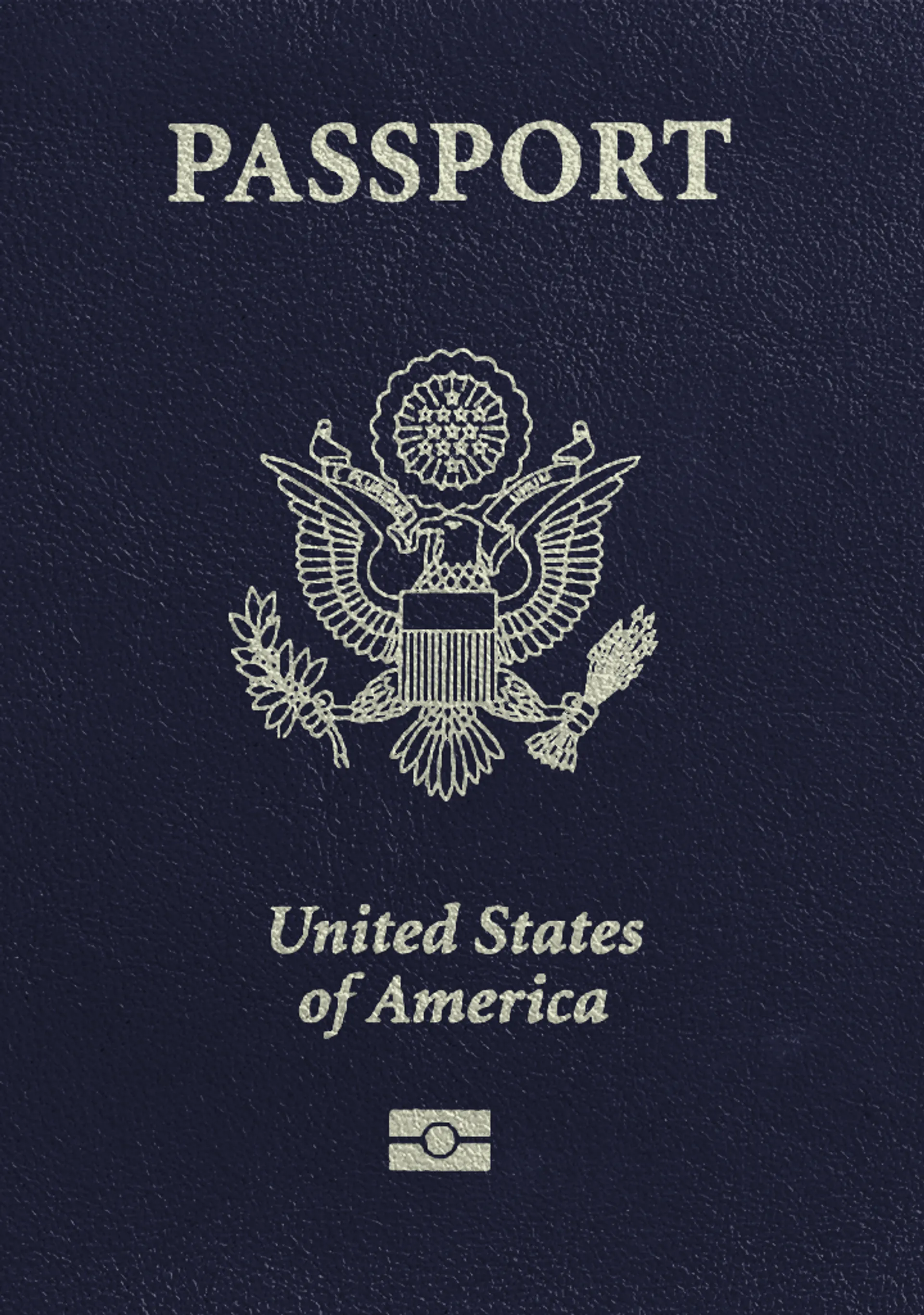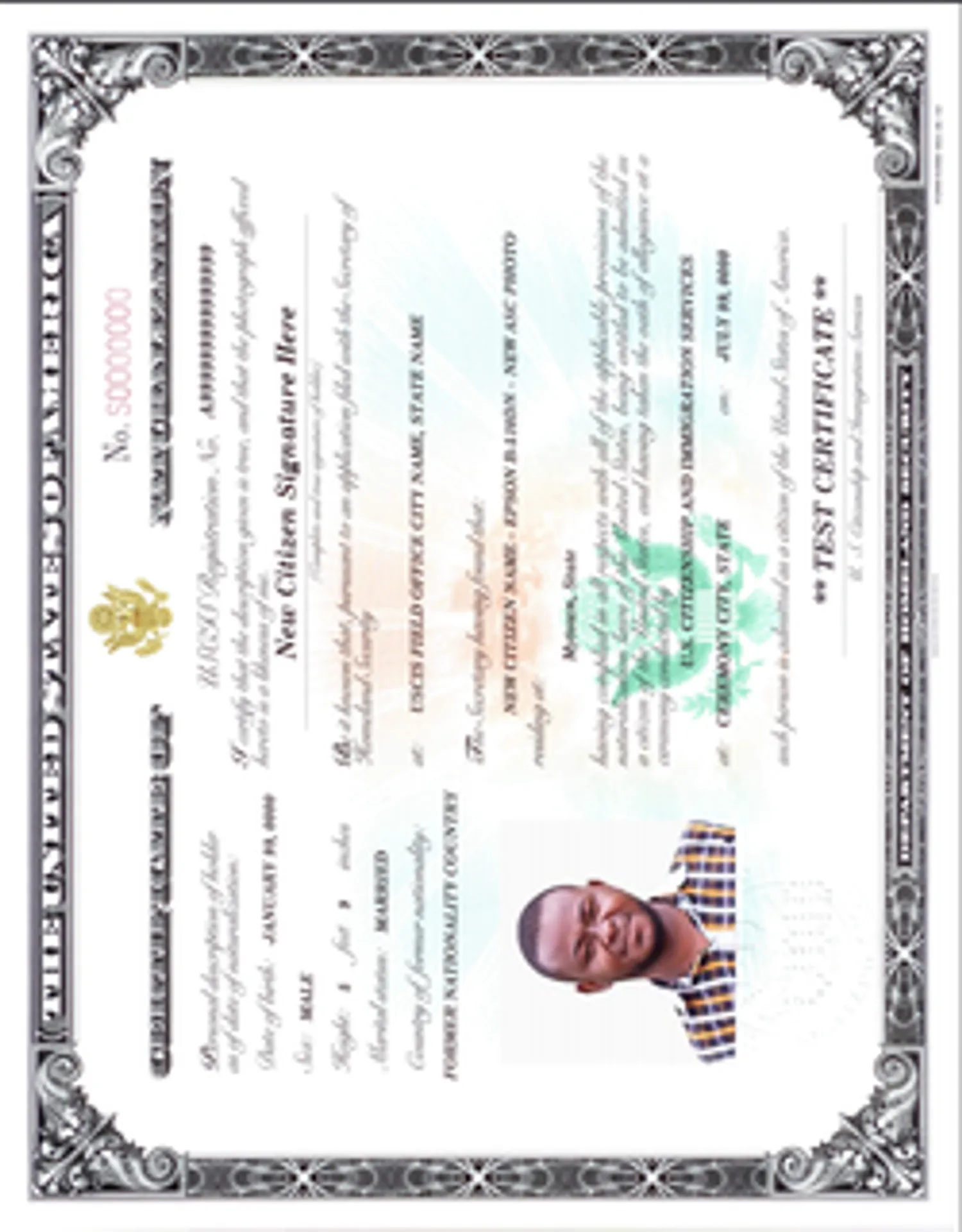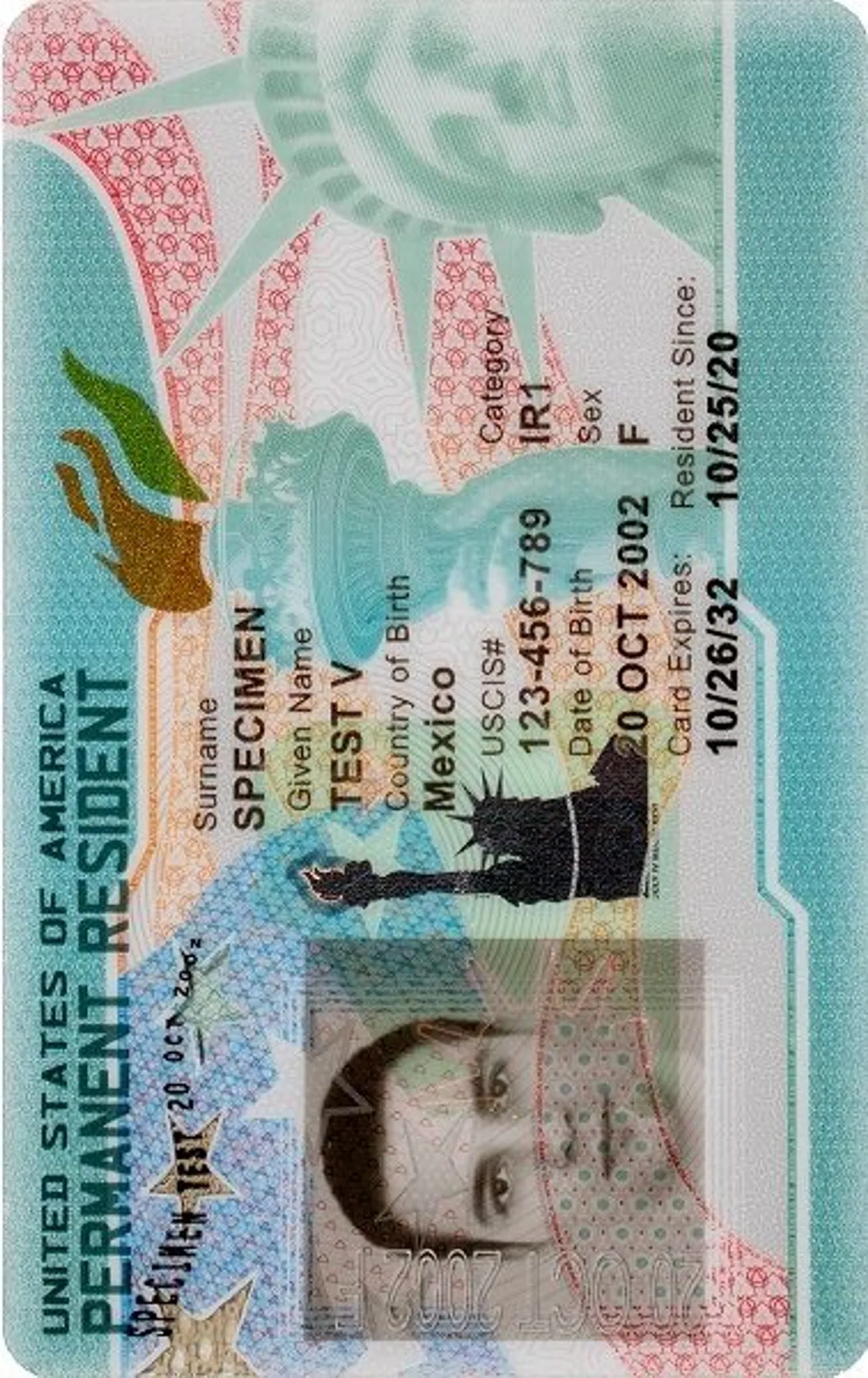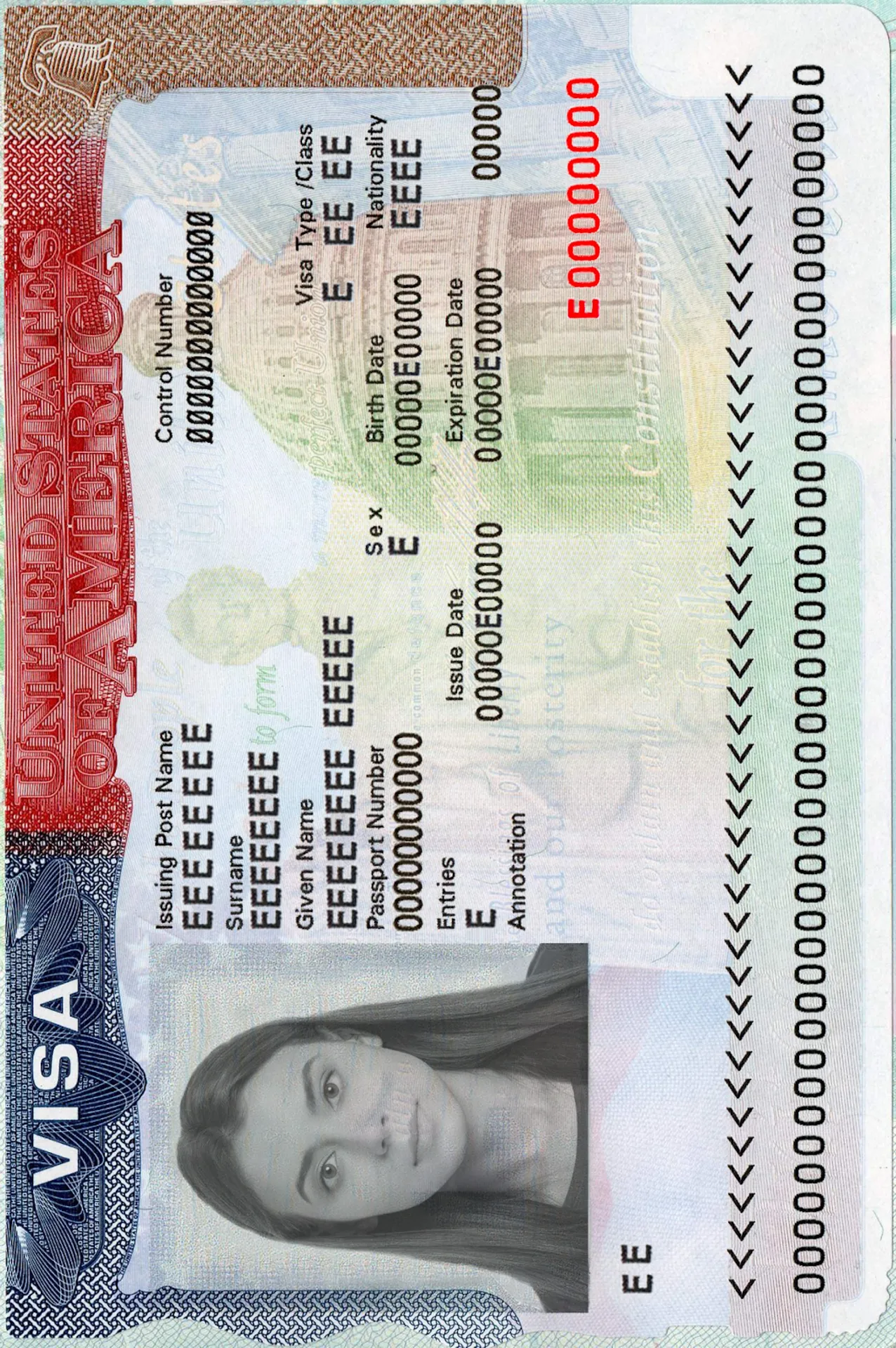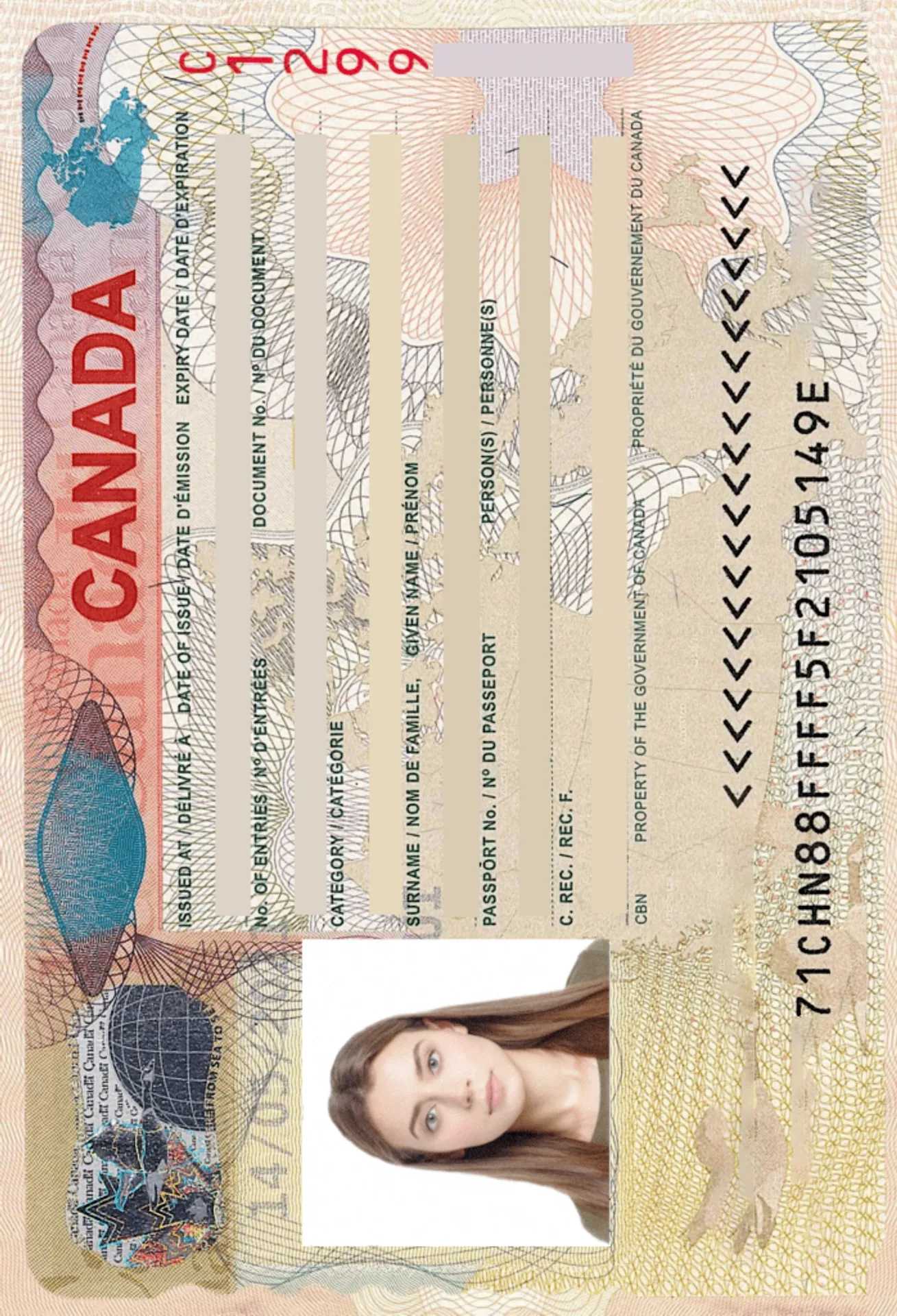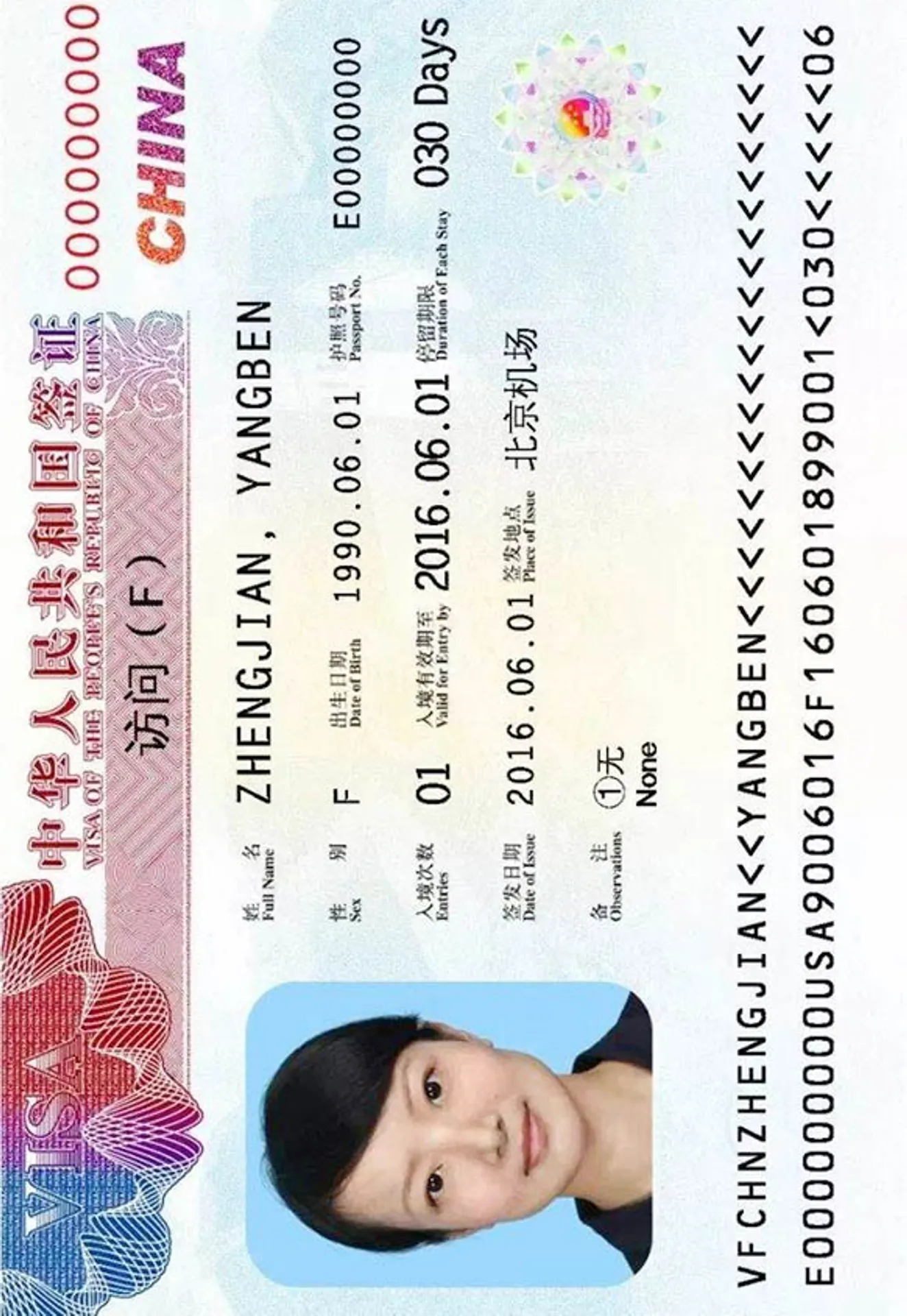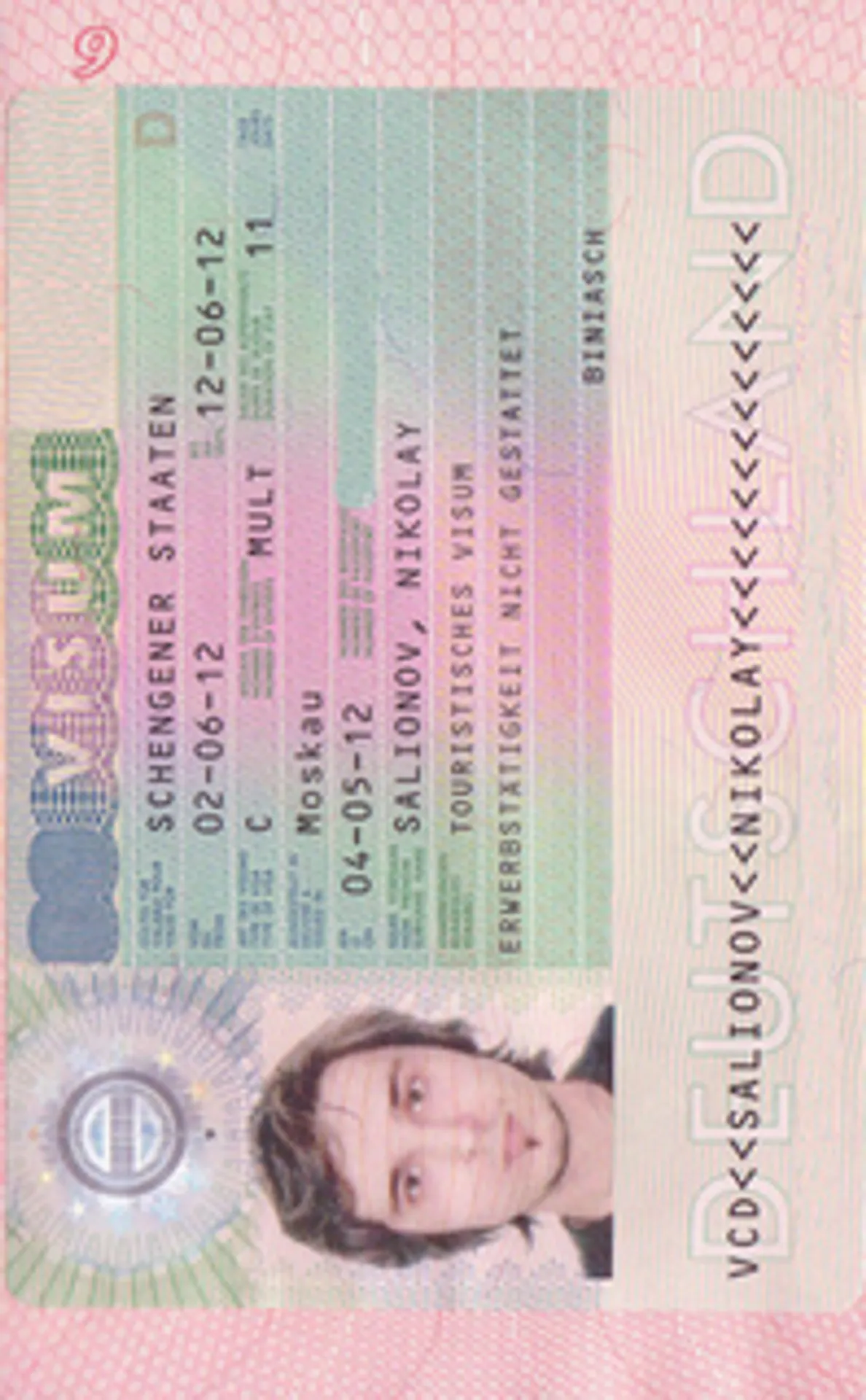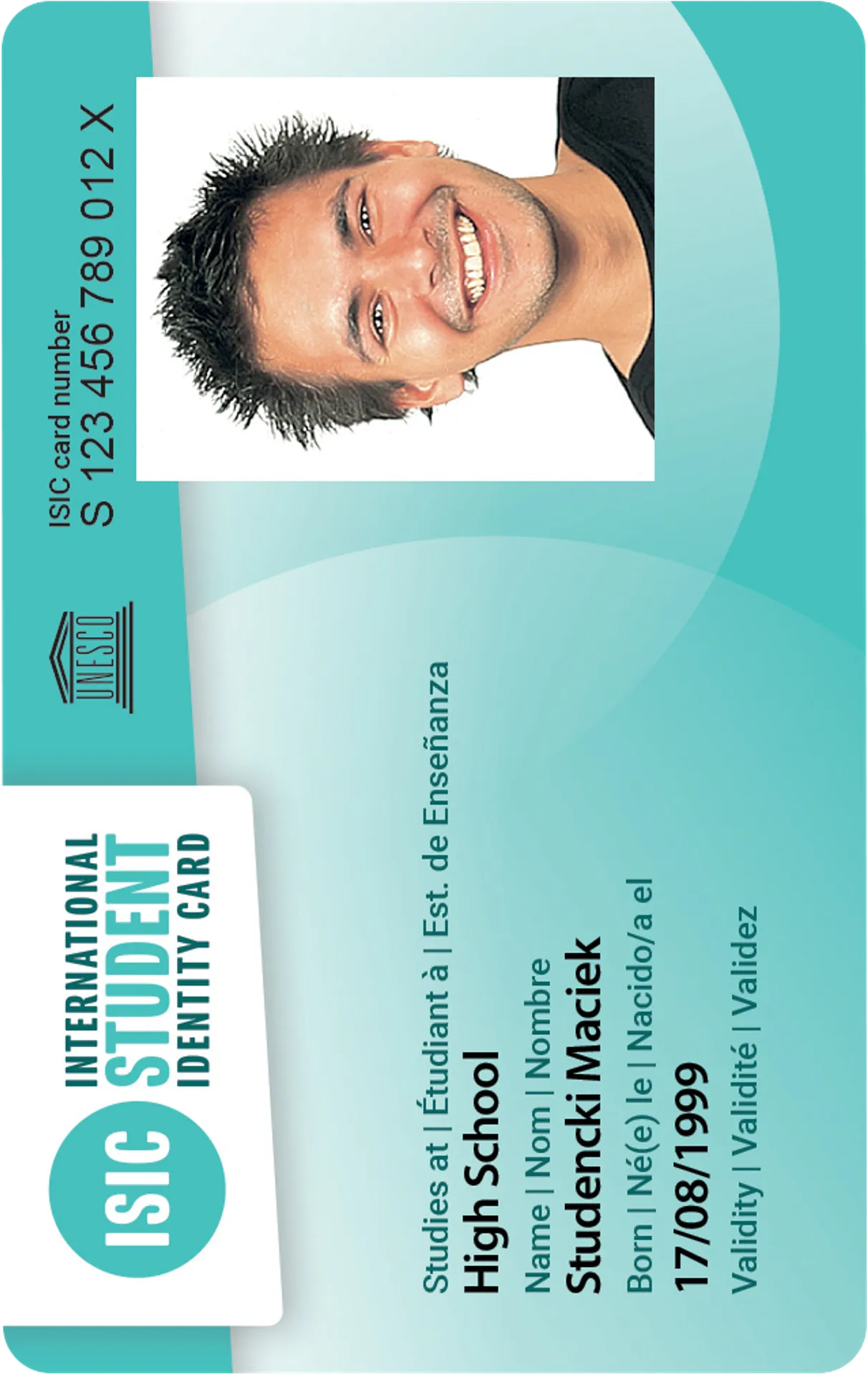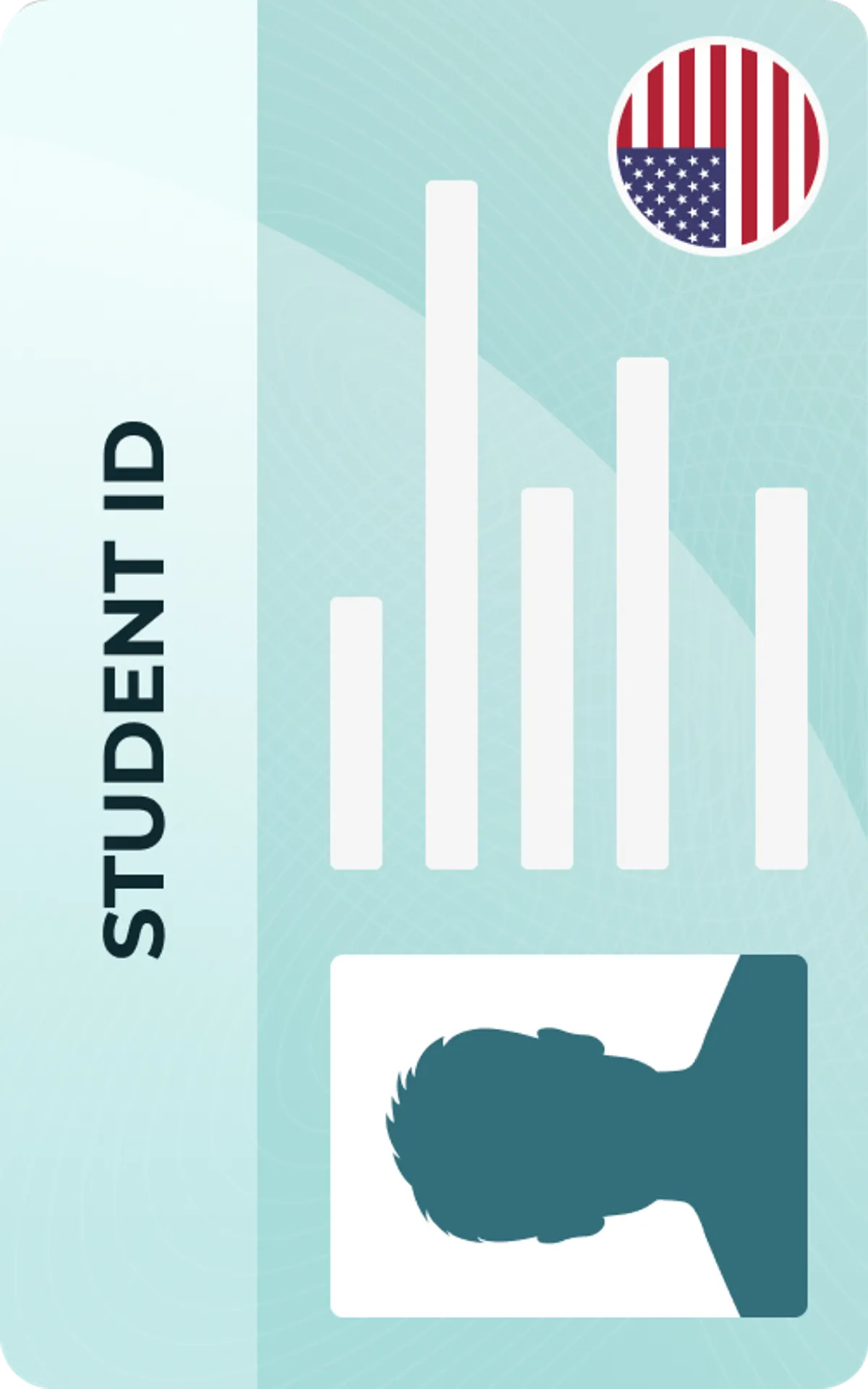
REAL ID
Don’t want to deal with the DMV backlog? Just get a passport. It’s accepted everywhere a REAL ID is and covers international travel. Even better, with PhotoAiD®, you can take a compliant passport photo from home in minutes.
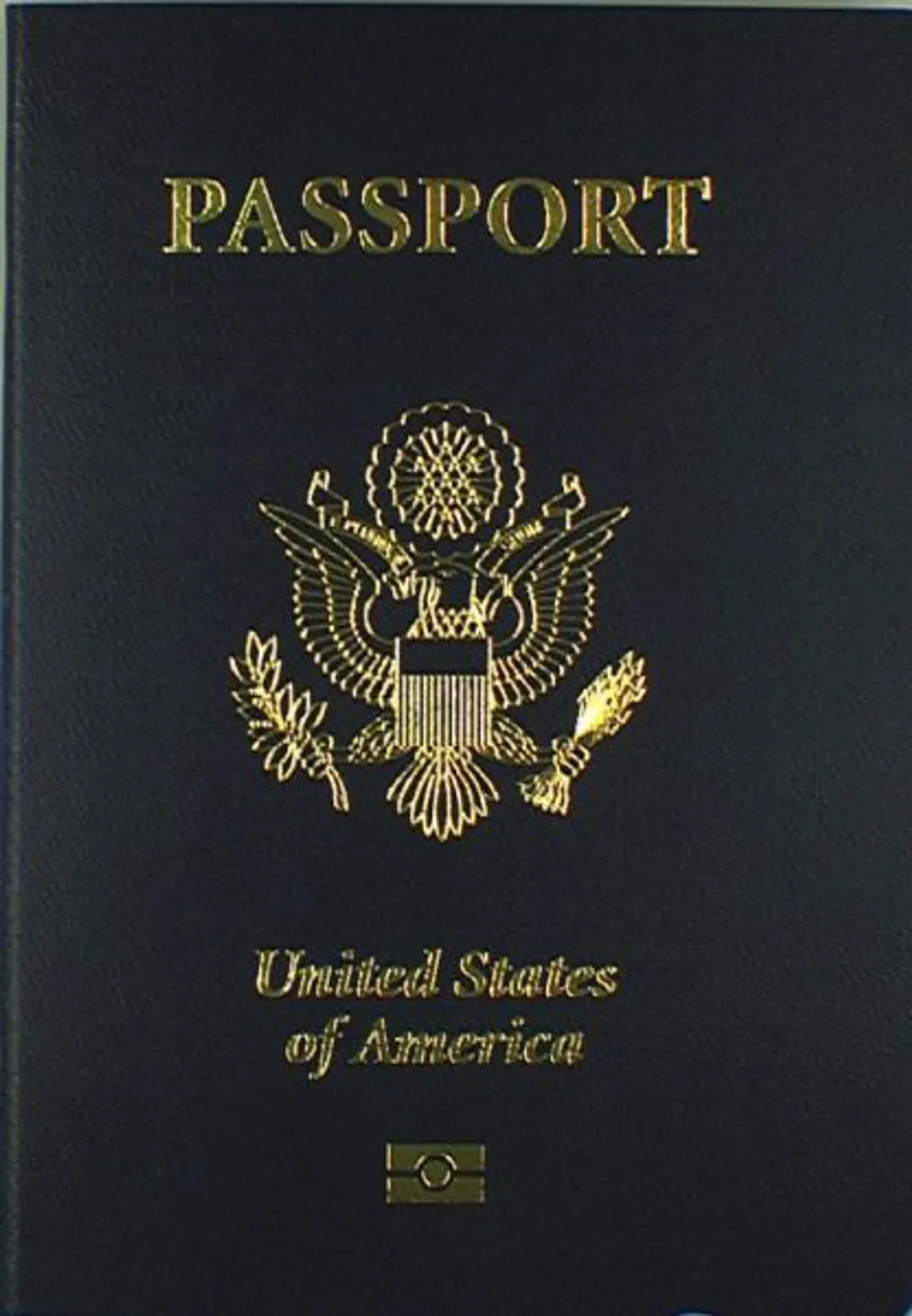






As a data-driven content creator and a member of the Society of Professional Journalists (SPJ), Max has 5+ years of writing experience. Over the course of his career, Max's work has garnered significant attention, with features in numerous prominent publications such as The New York Times, Forbes, Inc., Business Insider, Fast Company, Entrepreneur, BBC, TechRepublic, Glassdoor, and G2.
Mateusz is a seasoned specialist in biometric photography with over 5 years of hands-on experience. As a member of the prestigious British Institute of Professional Photography (BIPP) and the Association of Photographers (AOP), he has helped thousands of clients worldwide capture compliant photos for official documents.
REAL ID: Requirements, Deadlines, and How to Get One
If you’re a US traveler or resident, it’s important to know what the REAL ID is, why it was introduced, and how it affects your driver’s license or state ID.
In this guide, I’ll explain:
- What makes it different from a standard ID.
- How to get a REAL ID.
- Upcoming deadlines.
- Address common concerns.
Related reading:
- What Is the Difference Between a Visa and a Passport?
- What Does a Passport Type “P” Mean & Its Benefits?
- What’s the Difference Between a Passport Book and Card?
- How to Take a Good Driver’s License Photo
What Is the REAL ID Act and Why Was It Introduced?
The REAL ID Act of 2005 is a federal law that sets nationwide standards for state-issued driver’s licenses and identification cards.
It was passed in response to security recommendations from the 9/11 Commission, which found it was too easy to obtain fraudulent IDs under the old rules. In essence, the Act requires states to verify certain documents and add security features when issuing IDs. The goal is to make IDs more secure and harder to forge, thereby improving national security.
Under the REAL ID Act, federal agencies are prohibited from accepting licenses or ID cards that don’t meet these standards for specific purposes. Those purposes include:
- Accessing certain federal buildings and facilities (e.g., visiting military bases or federal courthouses).
- Boarding federally regulated commercial aircraft (i.e., passing through TSA for domestic flights).
- Entering nuclear power plants.
For any other use of your driver’s license or ID (such as driving, age verification, or banking), the REAL ID law doesn’t require a compliant ID.
It only affects the above federally regulated purposes.
How Is a REAL ID Different from a Standard License or ID?
A REAL ID is still a driver’s license or identification card issued by your state, but it meets higher security standards than traditional licenses. Below are the key differences.
Stricter issuance process
To get a REAL ID, you must provide additional proofs of identity, Social Security, and residency. The issuing agency verifies your documents more rigorously, which wasn’t always required for standard licenses in the past.
This helps ensure the cardholder is who they claim to be and is legally in the US.
Security features
REAL ID cards have specific security features and markings mandated by federal standards.
For example, REAL ID-compliant licenses are marked with a special star (or another approved symbol) in the upper corner of the card.
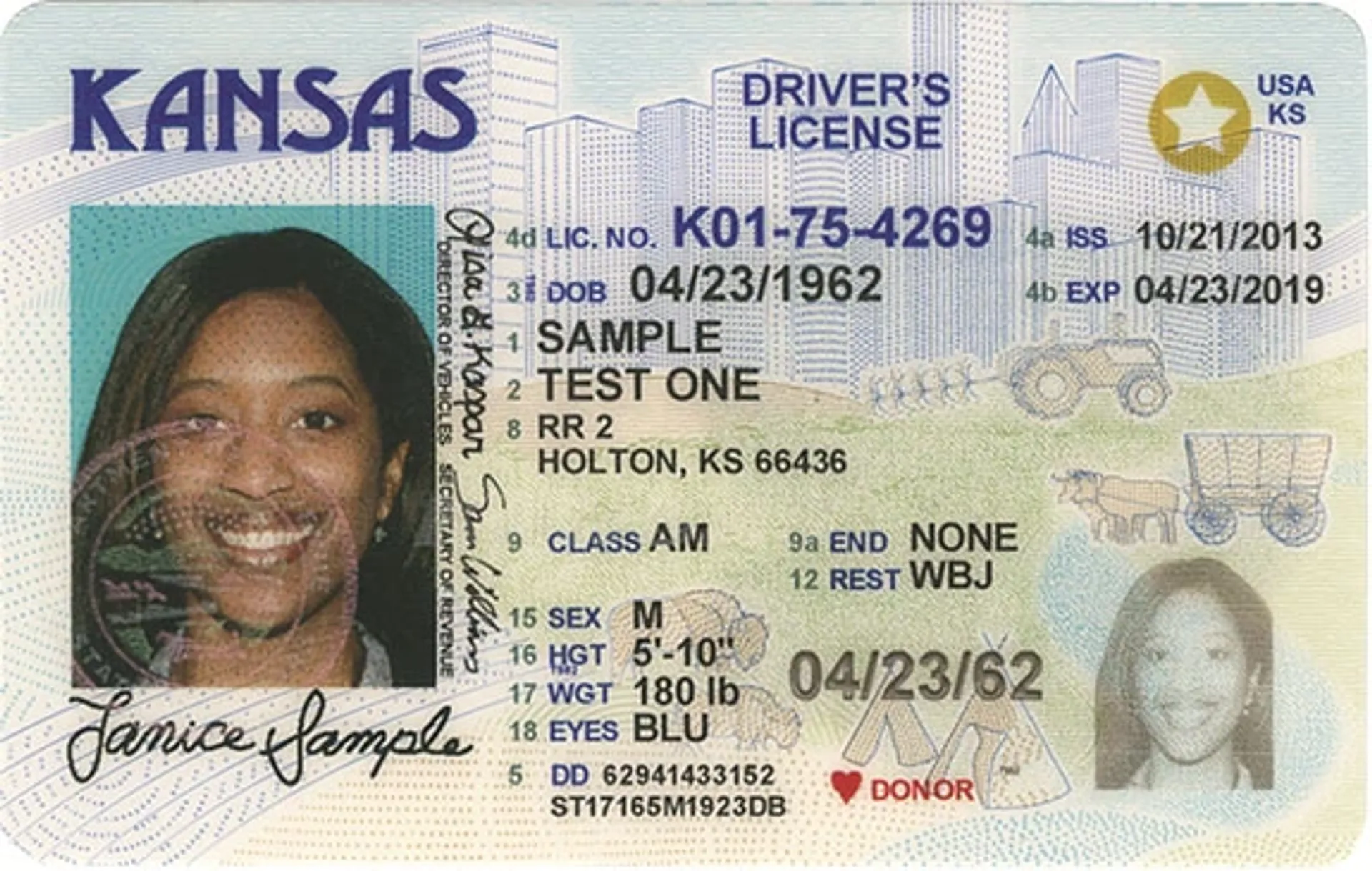
Example of a REAL ID-compliant driver’s license (Kansas). Note the gold star in the upper right corner indicating it meets federal REAL ID standards.
This star indicates the license meets federal verification and anti-counterfeit criteria. Standard licenses lack this.
Usage
A standard driver’s license is valid for driving and identification within your state, as usual. Still, only a REAL ID license (or other federally accepted ID) will be accepted for boarding domestic flights or entering secure federal sites after the deadlines hit.
In practical terms, after the law is enforced, if you show a regular license at TSA security in the airport, you won’t be allowed through unless you have another acceptable ID.
In short, a REAL ID looks similar to your current license but with a star marking and enhanced security.
Other than that, it still functions as your driver’s license or ID card day-to-day.
What Documents Are Required to Get a REAL ID?
Because REAL ID has more rigid issuance rules, you must present specific documents when you apply.
The exact requirements can vary slightly by state, but federal law sets minimum documentation that all states must collect.
In general, you should expect to provide:
- Proof of identity and legal status: A document that verifies who you are and that you’re legally in the United States. For US citizens, this could be a certified birth certificate or a valid US passport.
- Proof of Social Security number: You must provide documentation of your Social Security number (SSN). Typically, this is either your Social Security card or a W-2 form/paystub showing your SSN.
- Proof of residency (address): You need to show evidence of your current residential address in that state. Usually, you must bring two separate documents for this. Common examples include a utility bill, bank statement, lease or mortgage statement, or a voter registration card that show your name and address.
Pro Tip: Many DMV websites offer a REAL ID checklist. Using your state’s checklist can help ensure you show up with all the necessary papers. It’s also a good idea to bring original documents or certified copies, not photocopies, as most DMVs won’t accept copies. If you lack some documents, plan ahead to obtain replacements before going for your REAL ID.
How to Tell If Your Current ID Is REAL ID–Compliant?
Look for a star symbol on your driver’s license or state ID.
REAL ID–compliant cards issued by states include a star (usually gold or black) in the upper portion of the card, often the top right corner.

If your current driver’s license or ID doesn’t have a star, it isn’t a REAL ID–compliant card.
One exception
A few states and territories issue an Enhanced Driver’s License (EDL), which is also acceptable for federal identification purposes even if it doesn’t have a star. Enhanced Driver’s Licenses are offered in states like:
- Washington
- Michigan
- Minnesota
- New York
- Vermont
They are marked with an American flag or similar logo and are ID cards that double as border-crossing documents for US citizens. The Department of Homeland Security considers EDLs an acceptable alternative to a REAL ID-compliant card.

So—
If you have an Enhanced Driver’s License from one of those states, it’ll be accepted for boarding flights and entering federal facilities, just like a REAL ID.
When Will You Need a REAL ID for Air Travel (and Federal Access)?
The requirement to have a REAL ID for federal purposes has been delayed multiple times, but the current enforcement deadline is May 7, 2025.
Starting on that date (and going forward), the Transportation Security Administration (TSA) and other federal agencies will only accept identification that meets REAL ID standards for the purposes defined by the law.
In practical terms, this means:
- Domestic air travel: Beginning May 7, 2025, adults 18 or older will need a REAL ID–compliant driver’s license or an acceptable alternative ID to pass through airport security for US domestic flights.
- Federal facilities: If you visit a military base, federal courthouse, or other secure federal building that currently asks for ID, you must show a REAL ID–compliant card (or passport or other acceptable ID) to be permitted entry.
Now—
Will the TSA really turn people away after the deadline?
The official DHS position is yes: beginning on the enforcement date, travelers who show up without a REAL ID or acceptable alternative ID won’t be allowed through the checkpoint.
But there may be a brief grace period or phased approach.
The TSA has indicated it might use a “phased enforcement” strategy for a short time after May 7, 2025. This could involve TSA officers issuing warnings or providing extra screening for passengers who haven’t updated their IDs, rather than immediately denying boarding to everyone with a regular license on day one.
In a federal rule filing, TSA noted it wants to avoid “mass disruptions” in air travel by giving some leeway as travelers adjust.
That said, travelers shouldn’t count on a lenient phase-in.
The safest plan is to have your REAL ID or other valid ID by May 7, 2025, if you intend to fly or need access to federal sites. Any grace period will be temporary and at the discretion of authorities.
How to Get a REAL ID in Your State
If you need a REAL ID, you’ll need to get one from your state’s driver’s licensing agency (such as the DMV or motor vehicles department).
Here’s how to proceed:
1. Find out your state’s requirements
Visit or contact your state’s DMV (or equivalent) website for specific instructions on obtaining a REAL ID.
Every state has a slightly different process and may list which documents it accepts for proof of identity, residency, etc. The website should also tell you the fee (in most states, the cost is the same as a driver’s license renewal or a small additional fee) and whether you need an appointment.
Some states allow walk-ins, but as the deadline nears, scheduling an appointment can save you time.
2. Gather your documents
Using the checklist of required documents (see above and your state’s site), collect all necessary original documents to prove your identity, Social Security number, and residency.
3. Apply in person
In most cases, you must go to a DMV office in person to get a REAL ID. That’s because REAL ID issuance generally requires an in-person visit so the documents can be reviewed and scanned.
So head to the DMV with your documents and complete the application.
If your current license is up for renewal, they may just renew it early as a REAL ID. If not, it might be processed as a duplicate/replacement license upgraded to REAL ID status.
4. Receive your REAL ID card
After applying, the DMV will give you a temporary paper ID or receipt.
Your new REAL ID-compliant license will be mailed to you in a few weeks (the timeline varies by state).
Pro Tip: As the deadline approaches, DMVs have been experiencing a surge in REAL ID applications in many states, leading to longer wait times. Don’t wait until the last few weeks before a trip to get your ID; you might find appointment slots full. Some states have mobile DMV events or offer extended hours to handle the REAL ID demand, so check your state’s announcements. If lines and wait times are a concern, another option is to obtain a passport (or passport card) for travel instead, which can be used in lieu of a REAL ID.
Try our passport photo app for iPhone, or PhotoAiD® for Android (or click the button below) and see for yourself.

Who Doesn’t Need a REAL ID (and Acceptable Alternatives)
You might be wondering if everyone needs to rush out and get a REAL ID.
The answer is no, not in every case.
It depends on your circumstances and what other identification you have. Here are some scenarios and alternatives:
US passport
A valid US passport or passport card is a universally accepted form of ID for federal purposes. You don’t need a REAL ID if you plan to use your passport for domestic flights and federal building access.
Note: A REAL ID isn’t a replacement for a passport for international travel. If you travel abroad, you’ll still need your passport, since REAL ID licenses are only valid inside the US.
Military ID or other federal ID
Suppose you have a US Department of Defense identification card (such as a Military ID for active duty, retiree, or dependent, or a DoD civilian Common Access Card). In that case, that ID is accepted at TSA checkpoints and federal facilities.
Similarly, federally recognized tribal ID cards and certain other federal IDs, like a Permanent Resident Card (Green Card) or an Employment Authorization Card, are considered acceptable for travel and federal access.
Trusted traveler cards
The Department of Homeland Security issues “trusted traveler” cards for programs like Global Entry, NEXUS, SENTRI, and FAST, which are often used for expedited customs/immigration processing.
So if you’re a member of one of these programs and have the card, it can be used as an alternative to a REAL ID license when flying.
State-enhanced driver’s license
As mentioned earlier, residents of states that offer Enhanced Driver’s Licenses (EDLs) can use them as an alternative.
EDLs are basically supercharged driver’s licenses that also serve as travel documents for entering the US from Canada, Mexico, or the Caribbean by land or sea.
They are REAL ID-compliant by design.
If you have one, it typically has a US flag emblem and the word “Enhanced.” These are accepted at TSA instead of a REAL ID, and they have the added benefit of letting you cross back into the US at land border checkpoints without a passport.
Still, an EDL can’t be used for international air travel.
Children
Children under 18 don’t need to show an ID to fly domestically within the US when traveling with an adult. The TSA allows minors to pass without identification, as long as an accompanying adult has acceptable ID.
For international travel, children will need a passport as required by law, but that’s unchanged by REAL ID.
If you don’t fly or visit federal facilities
Technically, if you never plan to fly on a commercial plane, visit a federal building requiring ID, or enter a nuclear plant, you might not need a REAL ID.
You could continue using your standard driver’s license for identification in daily life (driving, buying age-restricted items, etc.) without issue. Many Americans, particularly those who aren’t frequent travelers, may choose not to get a REAL ID.
That’s perfectly legal—
The REAL ID Act doesn’t force anyone to have a REAL ID. It only stipulates what IDs can be accepted for certain purposes.
However, keep in mind that life circumstances can change. Even if you don’t fly often, you might have an emergency trip or need to fly occasionally. Without a REAL ID or passport, that would become problematic after the deadline.
Therefore, even some non-travelers opt to get a REAL ID as a form of “insurance” to ensure they have the proper ID if needed.
Sources
Frequently asked questions
The cost depends on your state, but typically ranges from $30 to $60. If you’re renewing your license, it might be included in the regular renewal fee or have a small additional charge.
Most DMVs will issue a temporary paper license on the spot, and your REAL ID card will be mailed within 2–4 weeks. Check your state’s processing times.
No. A REAL ID is not valid for international travel. You’ll still need a passport for any travel outside the US.
No. Children under 18 don’t need ID to fly domestically when traveling with an adult with valid identification.
You may not need a REAL ID if:
- You have a valid passport, passport card, or military ID.
- You have a trusted traveler card (e.g., Global Entry).
- You have an Enhanced Driver’s License (EDL) from certain states.
- You don’t fly or visit federal facilities requiring ID.
Yes. The REAL ID law only affects federally regulated activities. You can still drive, vote, and use your standard license for everyday purposes within your state.
You won’t be allowed through TSA security for domestic flights unless you present another acceptable ID, such as a valid US passport, military ID, or trusted traveler card (e.g., Global Entry).
May 7, 2025. Starting that day, TSA and federal agencies will require a REAL ID or approved alternative to access certain facilities or board domestic flights.
No. You must apply in person at your state’s DMV or licensing agency, since original documents need to be verified and scanned.
You’ll need to provide:
- Proof of identity and legal presence (e.g., passport or birth certificate)
- Proof of Social Security number (e.g., SS card or W-2)
- Two proofs of state residency (e.g., utility bill, lease)
Check your state DMV’s checklist for accepted documents.
Look for a gold or black star in the upper right-hand corner of your license or ID card. No star? It’s not REAL ID–compliant. Exceptions: Some Enhanced Driver’s Licenses (EDLs) don’t have a star but are still compliant.
In California, a REAL ID costs $45 for a driver’s license and $39 for an ID card.
A REAL ID is a driver’s license or state ID that meets stricter federal security standards set by the REAL ID Act of 2005. Starting May 7, 2025, it’ll be required to board domestic flights and enter certain federal facilities.
Both are state-issued IDs, but a REAL ID has:
- A gold/black star
- Stricter issuance process (proof of identity, residency, legal status, and more)
- Federal compliance for airport security and federal building access
A standard license can’t be used for flights starting May 7, 2025.
Due to high demand, it’s strongly recommended that you make an appointment for a REAL ID at your local DMV. Visit the Illinois Secretary of State website to schedule and check required documents.
No. A REAL ID and an Enhanced Driver’s License (EDL) differ.
- REAL ID: For federal purposes (flights, federal buildings)
- EDL: Includes border-crossing capabilities and is only available in a few states (e.g., WA, MI, MN, NY, VT)
EDLs automatically meet REAL ID standards, but not vice versa.
Yes. A REAL ID isn’t valid for international travel. You’ll still need a passport to enter Canada by air. If you’re entering by land or sea, an Enhanced Driver’s License (EDL) can be used, but a standard REAL ID cannot.
No. A valid US passport or passport card is an acceptable alternative to a REAL ID and can be used to board domestic flights and access federal buildings.
REAL ID will be required starting May 7, 2025. From that date forward, TSA will no longer accept standard driver’s licenses for domestic air travel.
Yes, starting May 7, 2025, adults must have a REAL ID or a federally approved alternative (e.g., passport) to fly domestically within the US.
Starting May 7, 2025, you’ll need a REAL ID (or acceptable alternative) to:
- Board domestic flights in the US
- Enter certain federal buildings (like military bases or courthouses)
- Access nuclear facilities
REAL ID–compliant licenses look similar to standard driver’s licenses but have a gold or black star in the upper right corner. This star indicates the ID meets federal verification standards. Designs vary by state, but the star is the key feature to look for.
The REAL ID Act is a federal law passed in 2005 that sets stricter standards for issuing state driver’s licenses and ID cards. It was created to enhance national security and prevent identity fraud after the 9/11 Commission’s findings.
Discover other documents we support
Was this information helpful?
Let us know how useful you found this page
Rate this page
4.9/5
Number of votes: 10






